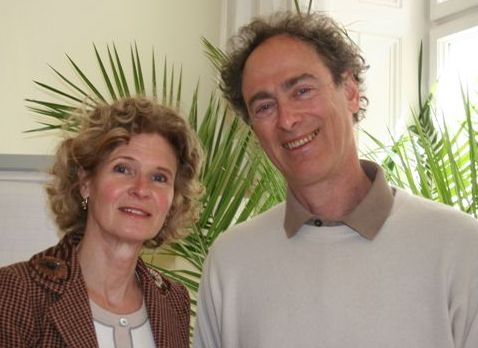In the first couple session, we listen to the nature of the problems as described by each partner independently according to his or her own subjective world. The two versions are typically very different. Our priority is to open up to both versions and both individuals – without judgement.
Starting in the second session, we teach the couple the communication modalities of the Intentional Dialogue (I.D.), which is the cornerstone of our practice with couples, whether the work is a long, deep therapy or a shorter series of practical coaching sessions. The I.D. is an orderly way for one partner, called the “Receiver”, to first mirror, then validate and finally express empathy for what is said to him/her by the other partner, called the “Sender”. The way of doing these 3 steps ensures the greatest possible chance of the Receiver opening up, including on an emotional level, to the Sender and what the latter has said.
The I.D. furnishes a bridge between the two subjective worlds, so that one partner can safely “visit” the other’s world. Even when the contradictions are very sizable between the two versions which the partners have developed, and although there is often a lot of resentment between them, this “bridge” is able to hold the weight and allow one partner to “cross” and visit the other in his or her world. The condition for success is that the partners cooperate just enough to follow our specific, practical instructions on which forms of verbal communication to use during the I.D. The spoken content is free for them to choose, whereas we set the forms.
An actual recent incident between the partners is typically used for building this bridge. Later, the partners are asked to do certain I.D.s as “homework” between sessions – once they are confident enough to be ready to experiment. A detailed, written guide is given in order to facilitate doing an I.D. correctly. Whether a fantastic success is obtained or not, very much can be learned from attempting to do this construction together, when debriefing is done at the following session with us.
We sometimes use several other methods like Systemic Coaching, in combination with the Intentional Dialogue, including notably Voice Dialogue (see www.voicedialogue.org) in order that certain “self-parts” of the Sender partner – which sometimes appear clearly in an I.D. – can be well heard, understood and felt by the Receiver partner.
This set of methods gives the consulting couple new resources for growing with each other as they pass through the inevitable crises.

The 8 typical problems that bring a couple to consult us
- flare-ups of jealousy
- strong disagreements about money
- a very difficult relationship with in-laws
- overreaction to small bothers, sometimes due to one partner’s
unrecognized post-traumatic stress syndrome - burn-out at work of one of the partners
- exhausting arguments, with tendency to physical violence
- an atmosphere of emptiness, with loss of sexual desire, functioning
as parents and household organizers but no longer as lovers - infidelity, known or not to the other partner
